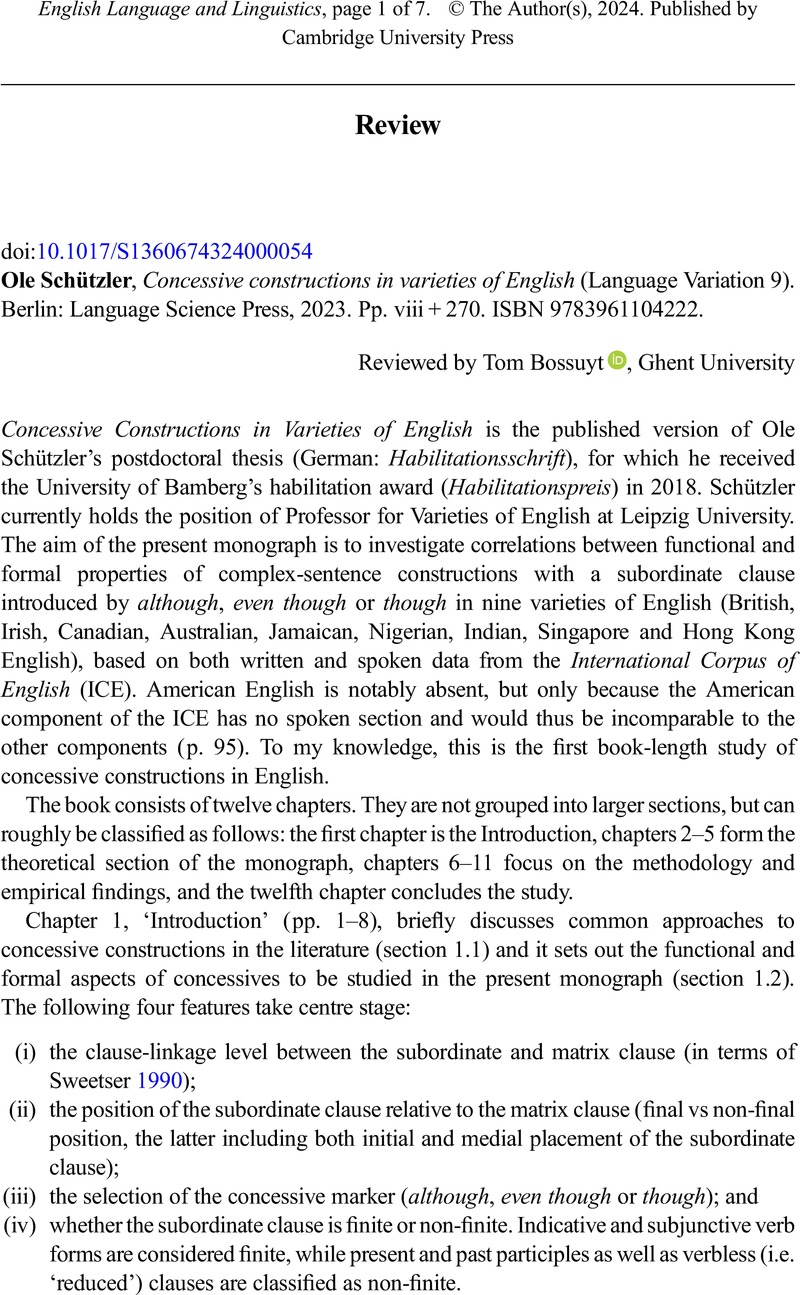No CrossRef data available.
Article contents
Ole Schützler , Concessive constructions in varieties of English (Language Variation 9). Berlin: Language Science Press, 2023. Pp. viii + 270. ISBN 9783961104222.
Review products
Ole Schützler , Concessive constructions in varieties of English (Language Variation 9). Berlin: Language Science Press, 2023. Pp. viii + 270. ISBN 9783961104222.
Published online by Cambridge University Press: 09 May 2024
Abstract
An abstract is not available for this content so a preview has been provided. Please use the Get access link above for information on how to access this content.

Information
- Type
- Book Review
- Information
- Copyright
- © The Author(s), 2024. Published by Cambridge University Press
References
Crevels, Mily. 2000. Concessives on different semantic levels: A typological perspective. In Couper-Kuhlen, Elizabeth & Kortman, Bernd (eds.), Cause – condition – concession – contrast: Cognitive and discourse perspectives, 313–39. Berlin: De Gruyter.Google Scholar
Hilpert, Martin. 2013. Constructional change in English: Developments in allomorphy, word formation, and syntax. Cambridge: Cambridge University Press.Google Scholar
König, Ekkehard. 1988. Concessive connectives and concessive sentences: Crosslinguistic regularities and pragmatic principles. In Hawkins, John A. (ed.), Explaining language universals, 145–66. Oxford: Blackwell.Google Scholar
Leuschner, Torsten. 2020. Concessive conditionals as a family of constructions. Belgian Journal of Linguistics 34, 235–47.Google Scholar
Quirk, Randolph, Greenbaum, Sidney, Leech, Geoffrey & Svartvik, Jan. 1985. A comprehensive grammar of the English language. London: Arnold.Google Scholar
Sweetser, Eve. 1990. From etymology to pragmatics: Metaphorical and cultural aspects of semantic structure. Cambridge: Cambridge University Press.Google Scholar


